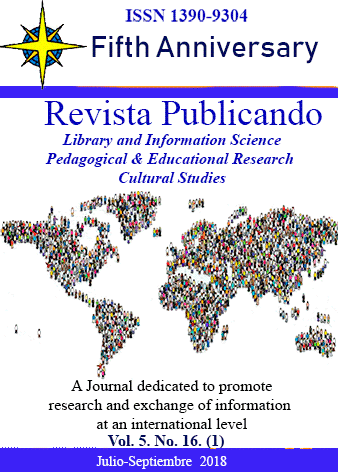Resumen
This paper considers the aspects of the translator”™s communicative competence within the scope of its analytical and synthetic abilities which were chosen as the subject of study by the reason of their tremendous importance for a person”™s development in whole, and, translator”™s professional competence, in particular.It is revealed that the analytical ability as one of the components of the translator”™s communicative competence is based on perception process as penetration of the communication participants”™ cognitive world and the hermeneutic observation connected with a thorough understanding of the communicant”™s language identities and the temporal states determined by the interaction environment of each communicative act.The degree of freedom of an interpreter when choosing linguistic means of harmonizing the communicative intentions of partners depends on the knowledge of conformity, as well as on the necessary methods for achieving modal congruence.When, at the stage of detection, a perception image is created, the final stage can be fulfilled, which, in fact, can be considered as a stage allowing the translator to “compensate” non-concurrence of the communication participants”™ cognitive models. Analytical and synthetic abilities must be viewed as a basis for a translator”™s communicative competence, and perception as a shaping component of its information and analytical component.
Referencias
Beeby A., «Choosing an empirical-experimental model for investigating translation competence: the PACTE model ». In: OLOHAN, M. (ed.) Intercultural faultlines: research models in Translation Studies. Vol. I: Textual and cognitive aspects. Manchester: St. Jerome, p. 43-56, 2000.
Caminade M.; Pym, A., «Translator-training institutions ». In: BAKER, M. (eds.). Routledge encyclopedia of Translation Studies. London: Routledge, p. 280-285, 2000.
Chesterman A., «From “is” to “ought”: laws, norms and strategies in Translation Studies ». Target, 5/1, p. 1-20, 1993.
Chomsky N., Current issues in linguistic theory, 5.ed. (1.ed. 1964), Haia/Paris: Mouton, 1970.
Fraser J., «The broader view: how freelance translators define translation competence », In: SCHí„FFNER, C.; ADAB, B. (eds.). Developing translation competence, Amsterdam: J. Benjamins, p. 51-62, 2000.
Gureeva A., Korolkova S., Novozhilova A., Shovgenina E., Mityagina V., Creating Information Retrieval Competence of Future Translators: An Integrative Approach, Mediterranean Journal of Social Sciences, Vol. 6, No. 6, Supplement 5, December 2015, Special edition, Rome, Italy, p.79-84, 2015.
Gí¶pferich, S., Towards a model of translation competence and its acquisition: the longitudinal study ”˜TransComp”™, In S. Gí¶pferich, A.L. Jakobsen, & I.M. Mees (Eds), Behind the mind: Methods, models and results in translation process research, p. 11-37. 2009.
Gile D., «Opening up in Interpretation Studies », In: SNELL-HORNBY, M.; Pí–CHHACKER, F.; KAINDL, K. (Eds.) Translation Studies: an interdiscipline, Amsterdam: J. Benjamins, p. 149-158, 1994.
Mityagina V., Linguistik und Fremdsprachendidaktik im Dialog zwischen den Kulturen, Wissenschaftliche Beitrí¤ge aus der Universití¤t zu Kí¶ln und der staatlichen Universití¤t Wolgograd / Hrsg. von V. Mitjagina und U. Obst, Ní¼mbrecht: ИздательÑтво Kirsch-Verlag, S. 81-89, 2011.
Richard J. Heuer Jr, Psychology of Intelligence Analysis”, published by “Center for the Study of Intelligence”, 1999.
Rothe-Neves R., Translation quality assessment for research purposes: an empirical approach, Cadernos de Traduí§í£o, 10(2), p. 113-131, 2002.
Rothe-Neves R., Notes on the concept of «translator”™s competence », Quaderns. Rev, trad. 14, p. 125-138, 2007.
Sternberg R.J., & Davidson, J.E., (Eds.). The nature of insight, Cambridge: MA: MIT Press, 1995.
Usted es libre de:
Compartir — copiar y redistribuir el material en cualquier medio o formato
Adaptar — remezclar, transformar y construir a partir del material
La licenciante no puede revocar estas libertades en tanto usted siga los términos de la licencia
Bajo los siguientes términos:
Atribución — Usted debe dar crédito de manera adecuada, brindar un enlace a la licencia, e indicar si se han realizado cambios. Puede hacerlo en cualquier forma razonable, pero no de forma tal que sugiera que usted o su uso tienen el apoyo de la licenciante.
NoComercial — Usted no puede hacer uso del material con propósitos comerciales.
CompartirIgual — Si remezcla, transforma o crea a partir del material, debe distribuir su contribución bajo la lamisma licencia del original.
